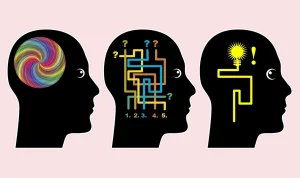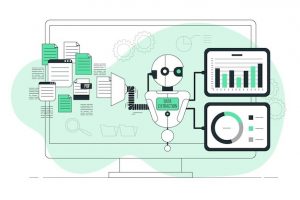Artificial intelligence (AI) has come a long way since its inception, but until recently, its capabilities were restricted to text-based communication and limited knowledge of the world. However, the introduction of multimodal AI has opened up exciting new possibilities for AI, allowing it to “see” and “hear” like never before. In a recent development, OpenAI has announced its GPT-4 chatbot as a multimodal AI. Let’s explore what is happening around multimodal AI and how they are changing the game.
Also Read: DataHour: Introduction to Multi-Modal Machine Learning

Chatbots vs. Multimodal AI: A Paradigm Shift
Traditionally, our understanding of AI has been shaped by chatbots – computer programs that simulate conversation with human users. While chatbots have their uses, they limit our perception of what AI can do, making us think of AI as something that can only communicate via text. However, the emergence of multimodal AI is changing that perception. Multimodal AI can process different kinds of input, including images and sounds, making it more versatile and powerful than traditional chatbots.
Also Read: Meta Open-Sources AI Model Trained on Text, Image & Audio Simultaneously

Multimodal AI in Action
OpenAI recently announced its most advanced AI, GPT-4, as a multimodal AI. This means that it can process and understand images, sounds, and other forms of data, making it much more capable than previous versions of GPT.
Learn More: Open AI GPT-4 is here | Walkthrough & Hands-on | ChatGPT | Generative AI

One of the first applications of this technology was creating a shoe design. The user prompted the AI to act as a fashion designer and develop ideas for on-trend shoes. The AI then prompted Bing Image Creator to make an image of the design, which it critiqued and refined until it came up with a plan it was “proud of.” This entire process, from the prompt to the final design, was fully created by AI.
Also Read: Meta Launches ‘Human-Like’ Designer AI for Images
Another example of multimodal AI in action is Whisper, a voice-to-text system part of the ChatGPT app on mobile phones. Whisper is much more accurate than traditional voice recognition systems and can easily handle accents and rapid speech. This makes it an excellent tool for creating intelligent assistants and real-time feedback in presentations.
The Implications of Multimodal AI
Multimodal AI has huge implications for the real world, enabling AI to interact with us in new ways. For example, AI assistants could become much more useful by anticipating our needs and customizing our answers. AI could provide real-time feedback on verbal educational presentations, giving students instant critiques and improving their skills in real-time.
Also Read: No More Cheating! Sapia.ai Catches AI-Generated Answers in Real-Time!

However, multimodal AI also poses some challenges. As AI becomes more integrated into our daily lives, we must know its capabilities and limitations. AI is still prone to hallucinations and mistakes, and there are concerns about privacy and security when using AI in sensitive situations.
Our Say
Multimodal AI is a game-changer, allowing AI to “see” and “hear” like never before. With this new technology, AI can interact with us in entirely new ways, opening up possibilities for intelligent assistants, real-time presentation feedback, and more. However, we must be aware of both the benefits and challenges of this new technology and work to ensure that AI is ethically and responsibly used.
Related
- SEO Powered Content & PR Distribution. Get Amplified Today.
- PlatoData.Network Vertical Generative Ai. Empower Yourself. Access Here.
- PlatoAiStream. Web3 Intelligence. Knowledge Amplified. Access Here.
- PlatoESG. Automotive / EVs, Carbon, CleanTech, Energy, Environment, Solar, Waste Management. Access Here.
- BlockOffsets. Modernizing Environmental Offset Ownership. Access Here.
- Source: https://www.analyticsvidhya.com/blog/2023/06/openais-multimodal-ai-can-see-hear/



